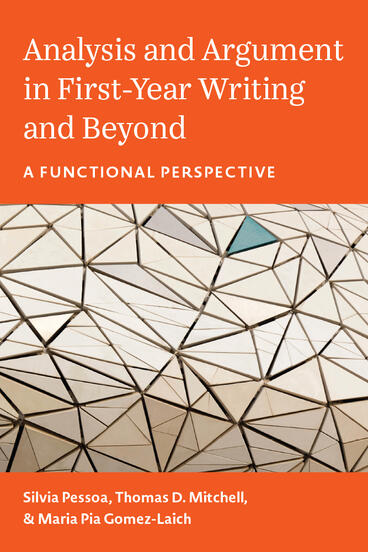Analysis and Argument in First-Year Writing and Beyond
A Functional Perspective
Developing a language for students and teachers to discuss good writing
Description
In an increasingly wider range of disciplines college students are expected to write arguments throughout their undergraduate studies. While most instructors know good writing when they see it, they are not always able to articulate the finer details of how language is used to compose the strong arguments they expect from their students. Analysis and Argument in First-Year Writing and Beyond provides a common language to talk about and teach argument writing.
The authors harness over ten years of research on analyzing, scaffolding, and assessing argumentative writing in university classrooms to offer research-based tools for first-year writing and disciplinary instructors to make their expectations explicit to students. To articulate the linguistic resources of argumentation, the authors rely on genre-based pedagogy, informed by systemic functional linguistics (SFL). By leveraging their expertise , the authors offer practical tools for scaffolding writing in key genres across broader fields, such as writing studies, business administration, and information systems.
Each chapter focuses on a single tool, explaining it with mentor texts, sample texts, and visualizations, and provides guided classroom activities that teachers can adapt to fit their own contexts. With these tools, instructors and students will better understand how to:
- distinguish between descriptive and argumentative writing;
- write argumentative claims;
- apply an analytical framework in a written text;
- maintain a consistent position in an argumentative text while incorporating outside sources;
- argue for one position in favor of viable alternatives.
Silvia Pessoa is a Teaching Professor of English at Carnegie Mellon University Qatar.
Thomas D. Mitchell is Associate Teaching Professor of English at Carnegie Mellon University Qatar.
Maria Pía Gómez-Laich is Associate Teaching Professor of English at Carnegie Mellon University Qatar.

